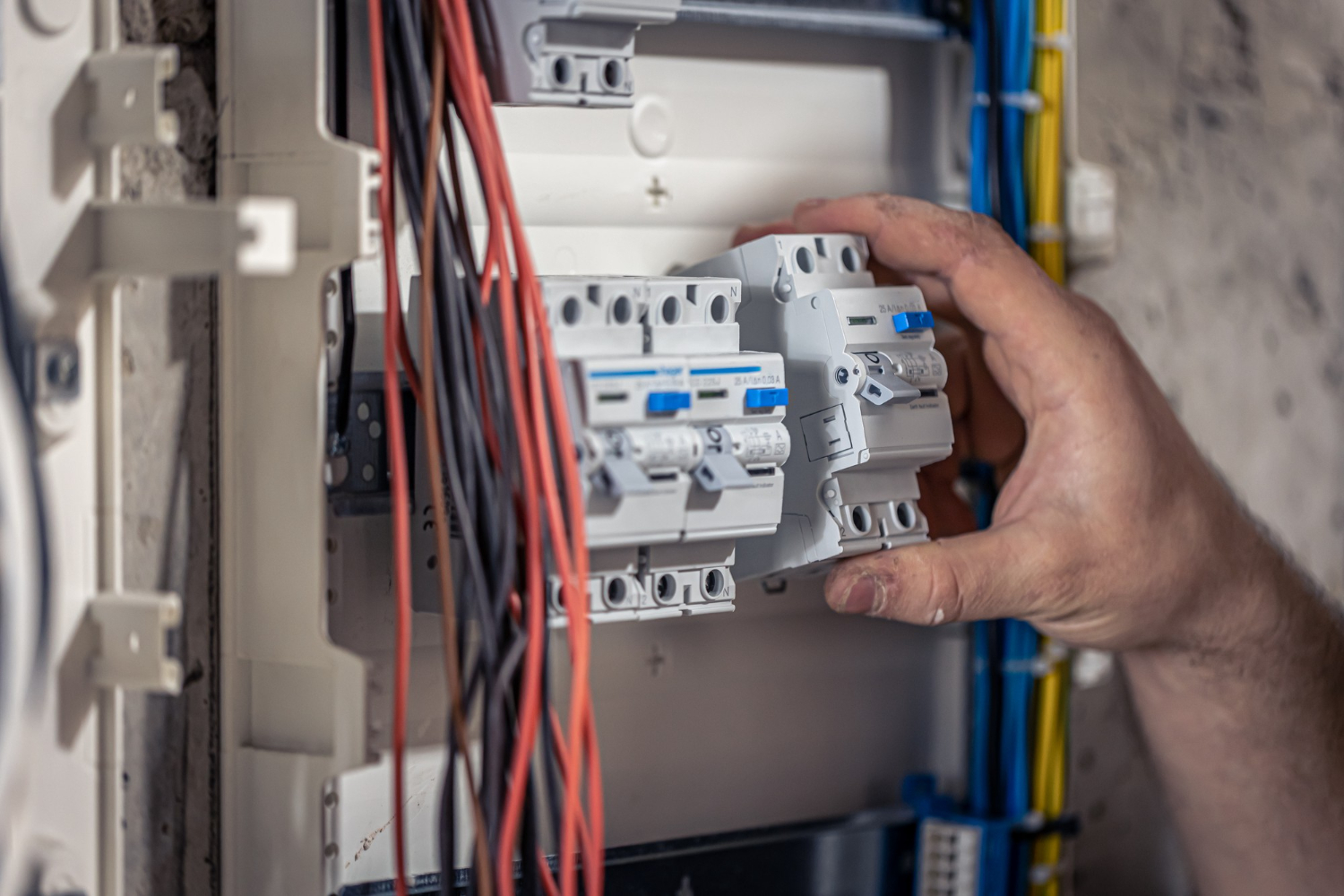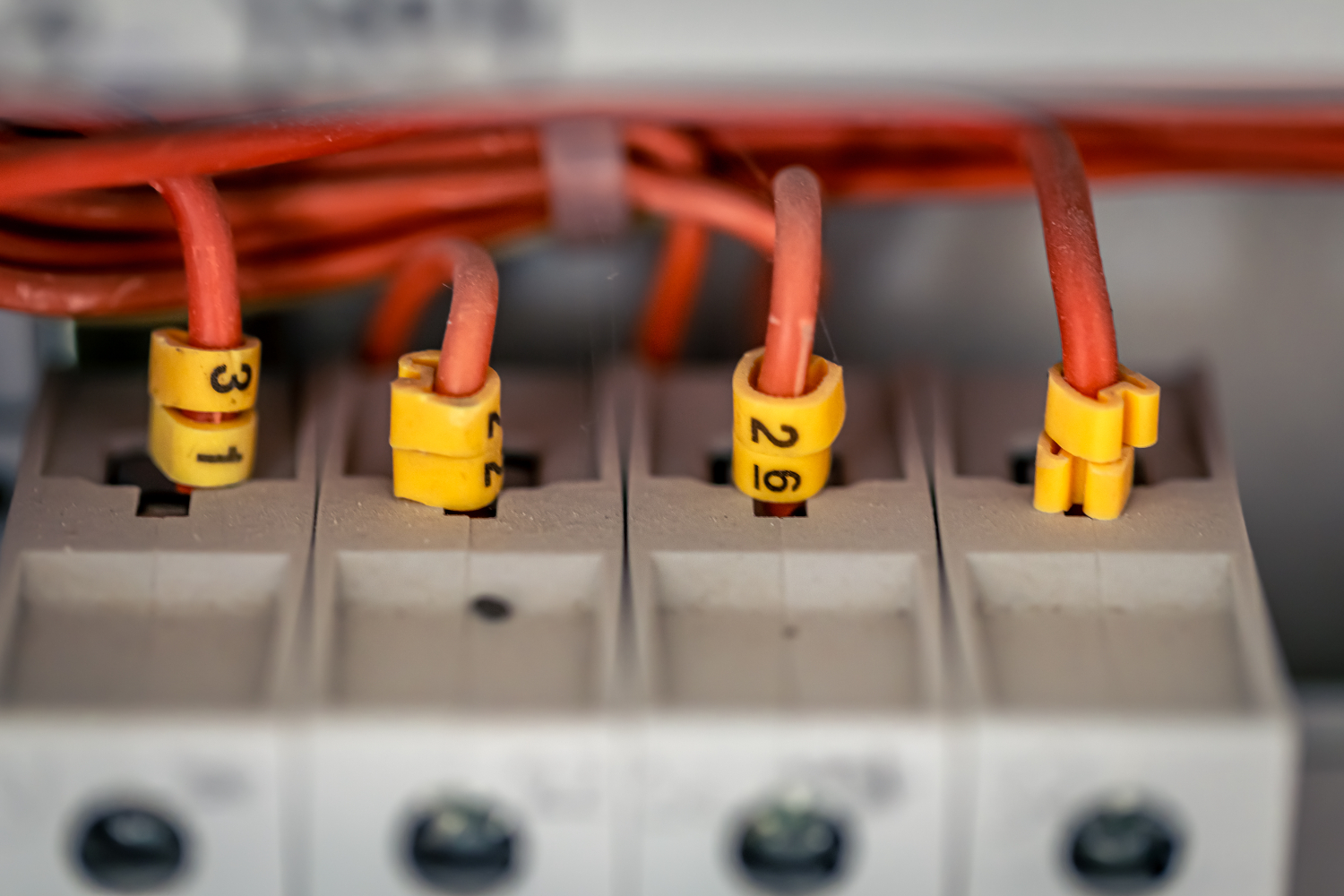A properly installed circuit breaker safeguards your electrical system by ensuring it can safely carry the required load without risking damage or other hazards. But how does a circuit breaker work?
Let’s explore how circuit breakers work to understand their significance.
What Is a Circuit Breaker and How Does It Work
Circuit breakers refer to electromechanical devices designed to protect an electrical circuit from damage caused by excess current. These breakers act like automatic switches that interrupt the flow of electricity when they detect a fault in the electric circuit.
Whenever there’s a short circuit or the current exceeds the breaker’s base value, it cuts off the flow of electricity.
For example, if the electric current supplied from the power source to your electric kettle or home entertainment system is higher than the circuit breaker rating, the device will trip and prevent any more current from flowing.
Unlike fuses, once you resolve or clear the fault, you can manually or automatically reset the breaker to restore power to the circuit. Sometimes, you may need to replace a damaged or worn-out breaker.
Circuit breakers have wide-ranging applications, from residential to large industrial systems. When working with industrial equipment or safely managing electrical currents in high-powered appliances, your electrician will recommend installing a circuit breaker rated at 240 volts.
How Does a Circuit Breaker Work Step by Step?
When open, a circuit breaker allows current to flow from the lower terminal through the various parts and out to the upper terminal. Most modern circuit breakers use both electromagnetic and thermal tripping protection mechanisms to ensure effective operation.
Unlike circuit breakers that use either thermal or short-circuit protection, modern units integrate both protection mechanisms to provide comprehensive protection against various electrical faults.
Both electromagnetic and thermal protection happen in parallel on a similar principle to move the switch.
Thermal Protection
This mechanism relies on a bimetallic strip that bends when heated by the current passing throughout the circuit. When an overload or short-circuit causes an increase in current, the bimetallic strip heats up and bends, tripping the breaker and disconnecting the circuit.
Electromagnetic Protection
This mechanism operates on the principle of electromagnetic induction. When current changes suddenly, such as during a short circuit, it creates a strong magnetic field around the conductor.
The magnetic field triggers the circuit breaker’s electromagnetic protection mechanism to open the circuit and disconnect the power supply to prevent damage or hazards.
Other types of circuit breakers include the GFCI and the AFCI. A shunt trip breaker, an optional accessory for your circuit breaker, allows you to trip the breaker remotely for added protection.
Contact ESD LLC, the Leading Provider of Circuit Breakers in the Northwest
Now that you can answer the question, “How does a circuit breaker work?” ESD LLC stands ready to assist you with your electrical equipment needs. We have over 20 years of experience in the field and believe in supplying high-quality products at reasonable prices.
Contact us today to learn more about circuit breakers and all our other products.




